
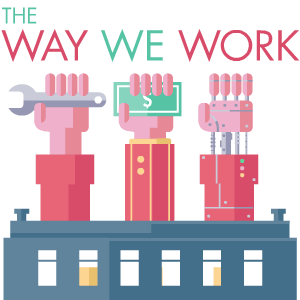
I first began riding mini-buses in Karachi not to get from one place to another, but to find sources for a story I was working on about infanticide. Though I was born in Karachi, I’d grown up in the United States, where the debate around abortion raged in public and private spaces. When I returned to Pakistan in 2012 as a working journalist, I learned that women in Karachi’s poorest neighborhoods were murdering their infants and leaving them in trash heaps.
At least 1,500 dead babies were found in 2014 alone, and city workers estimated that the real number was much higher. They had no way of calculating the children who were never found, though. This phenomenon, I realized, was a consequence of the country’s limited healthcare options and dismal education. But there was an alternative: Karachi had a well-publicized safe harbor system, with sites around the city where parents could drop off an infant without anyone asking them questions. What, then, made someone choose to murder a child after carrying it to term, over placing the baby in one of these city-wide cradles?
As a woman working in Karachi, my life was unequivocally privileged. I spoke three languages, had a master’s degree from the United States, and lived in a house with two different systems of backup electricity when we lost power–which happened frequently. Though my reporting often took me to areas of the city that felt wildly foreign, I couldn’t figure out how to find and speak to the wide swathe of women who had firsthand knowledge of this infanticide.
After months without success, I finally asked my household maid for ideas. Slowly, in broken Urdu, I explained to her what I was trying to do. My question wasn’t how to get women to talk to me, a concern I’d tabled to tackle later. I simply wanted to know how to find these women first. “Ride the bus,” she told me.
That first day I flagged a mini-bus and climbed on, I stepped into a new world of feminine hyperawareness and uncertainty, to one of groping, leering, and sometimes even outright acts of violence against women; where they are often slapped, pinched, sometimes even grabbed at by multiple men at the same time. Most of the women on the bus, to whom I explained what I was looking for, pressing a paper slip printed with my phone number into their palms, were simply commuting to jobs.
Though I was dressed in a shalwar kameez, I knew I looked out of place, that my Urdu was heavily accented. In Karachi, no one tells you that women aren’t allowed on buses. Instead, as in many other places throughout the city, they’re just made to feel that they’re pushing up against something acute and insidious, a kind of sexism that is intended to let them know just how powerless they truly are if they have any ambitions about taking up space safely and working toward a different life.
I did end up finding women willing to speak to me on the bus, but more than that, I experienced firsthand just how hard it was for them to both get themselves to work, and find safe spaces to labor when they do.

Though Pakistan has not held a census in almost 20 years, an estimated 22 million people live in Karachi. According to Pakistan’s Bureau of Statistics, women make up only 28 percent of the country’s labor force, with most working in agricultural jobs or as unskilled household laborers. Only three percent of Karachi’s skilled, professional jobs are held by women, who account for less than .01 percent of workers in finance, real estate, and insurance. Though women born into families with more money are able to work within the healthcare and teaching sectors, the majority of women who do have jobs are employed as home-based nannies, maids, or cooks.
Aside from the harassment they face on their commutes, they earn 38.5 percent less than their male counterparts, and work in informal sectors where they have fewer protections. Still, a 2007 survey of youth in Pakistan found that 80 percent of young women hungered for opportunities that would allow them to work in the city, even as they acknowledged the barriers to commuting to a job. Overall, these women said that if the opportunities existed, they’d find a way around the mobility issues.
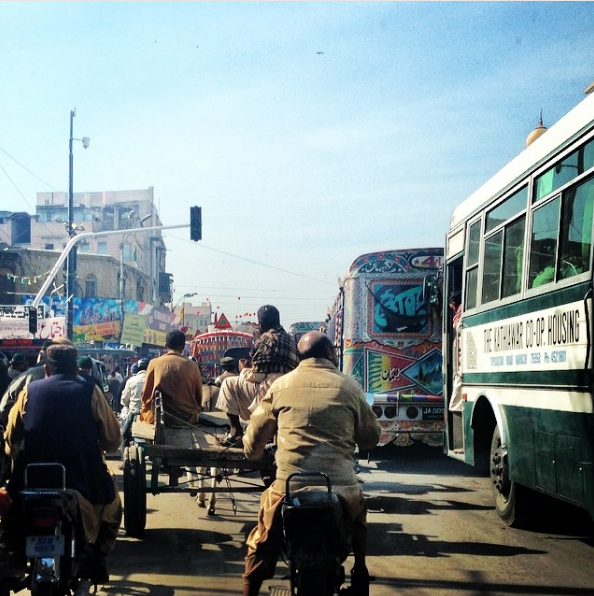
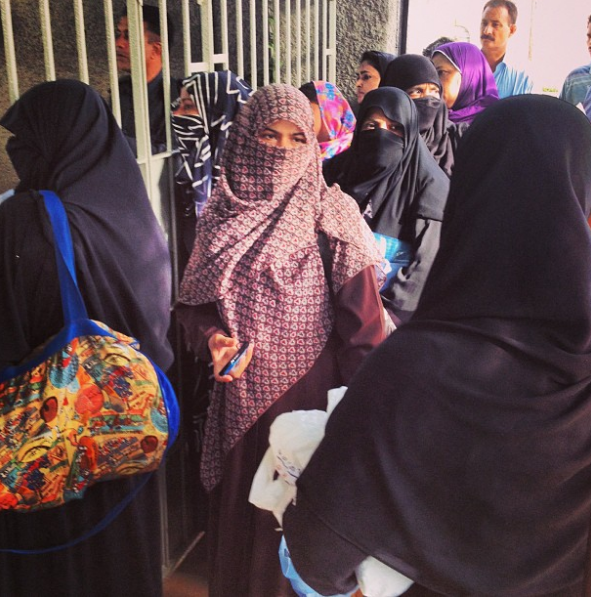
Social scientists have a term for this inability to easily move around a city like Karachi: It’s called purdah and it encompasses the practice of secluding women, of keeping them out of sight from men and strangers–often through the act of veiling them when they’re outside the home. Purdah’s effects trickle down to far more than just movement. Women in Karachi are not able to live independently; most live with their parents until they get married, at which time they immediately move in with their husbands and new in-laws. Many landlords will not lease an apartment to a single woman, and there are almost no legal protections for women living alone.
Government programs to address the gender divide in employment have largely ignored that though purdah varies drastically between classes–women in the middle of Pakistan’s socioeconomic spectrum are the least likely to enter the labor force–its influence is essentially the same. The Collective for Social Science Research, a Pakistani think tank, has hypothesized that the government blames existing cultural norms as being too difficult to tackle, wrongly allowing policymakers to absolve themselves for programs that fail.
What has the beginning promises of empowering women to be more independent and industrious, though, are a few independently run campaigns aimed at raising the collective profile of those who want a visible change in public life–and the debut of a few open cafes where they can sit together, converse, and work.

In the five years I spent in the city, I looked to carve out safe spaces to work, especially in areas of the city that are largely devoid of women. The latter, I solved by hiring a driver who could take me around the city, while serving as a de facto male protector.
In my family, none of the women wear a veil when they leave the house. Working is a choice, not a necessity. We aren’t economically required to bring in a check. And while women like me aren’t struggling to earn a living wage, there’s still a pervasive idea that our contributions aren’t as valuable as men’s. Even among wealthier families in Pakistan, few women are entering STEM fields or looking to run the family businesses. Instead, we’re encouraged to work as teachers or fashion designers.
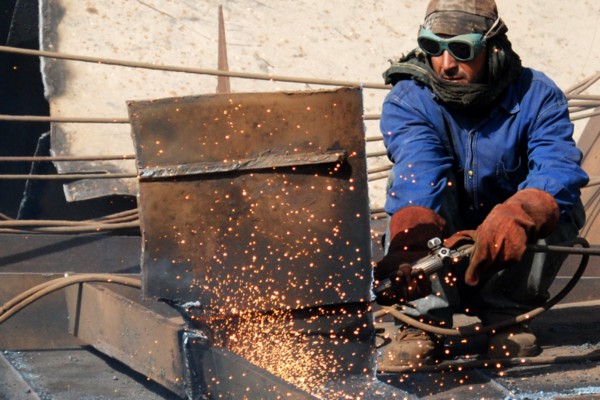
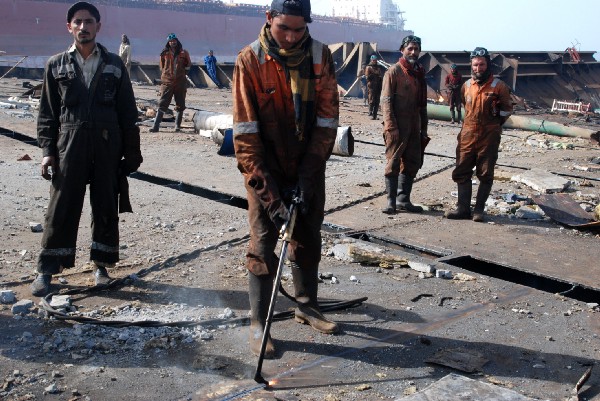
Sometimes it’s this unexpected choice of my occupation that gives me an advantage when I’m working in the field as a female reporter. During one of my more difficult assignments, I walked around Balochistan’s Gadani Beach, where men work at ripping apart massive ships by hand. Those I interviewed were all day-laborers, many of whom came from remote villages up north. Even before I opened my mouth to explain why I was there, I realized that not one man had made me feel uncomfortable for being in a place where there were no women.
After I told them I was writing an article about labor rights, and the injuries and lack of protections they have, they all treated me with a professional respect. In this case, my economic privilege outweighed the typical barriers that I faced as a working woman in Karachi.
The next day, however, while interviewing some of the business-owners that employed these day-laborers, I was scoffed at, minimized, and scolded for thinking that as a woman I could ever understand what it was like to run a business. One man even told me that I could just ask all of my questions to my father, who would be able to help me understand how profits worked.

The more time I spent in Karachi, the more I yearned for a simple coffee shop. I wished for environments I had taken for granted in the West, where I could sit with a laptop, connected to working Wi-Fi, and safely write outside my home.
A half-dozen or so co-working spaces have opened around Karachi recently, largely driven by influences from abroad. Perhaps the most well known open cafe in the city, called The Second Floor (T2F), was founded by a human rights activist named Sabeen Mahmud in the upscale Defence district. Mahmud envisioned the space as one where young people could gather (without pressure to buy food or drinks) and spend as much time there as they wanted–for free. She’d hold events, allow students to study, offered Wi-Fi, and ultimately provided people with a safe space to mingle and work. While Mahmud was the victim of a targeted assassination in 2015, the space has lived on.
It functions exactly like the Western coffee shops that I miss so much–though it doesn’t open until 12 p.m. and is located in an area of the city that can be hard to access for many. Though T2F aims to be egalitarian, this and places like it only address one strata of Karachi’s highly divided class system. Women who work as home-based laborers or in the industrial and agricultural sector have little time or need for it.
Even more, when I stopped by one of the city’s new co-working spaces, the woman who operates it made it clear to me that she didn’t want people to associate her space “as a place for women.” She said she wanted it to be for serious businessmen, and refused to say anything more to me on the record.
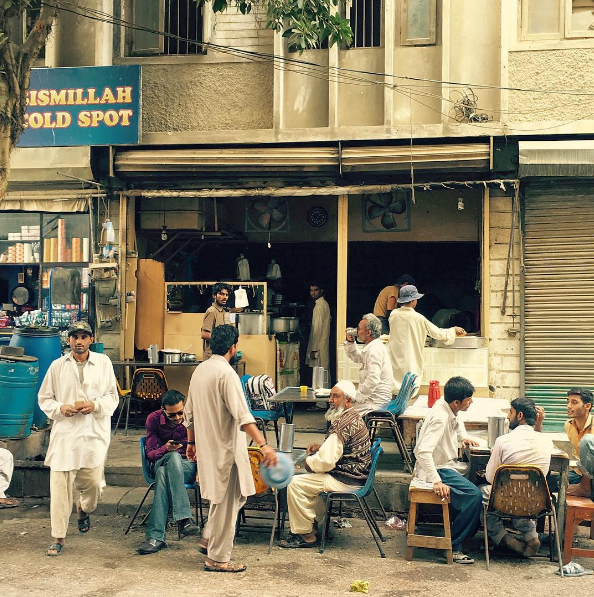
Perhaps it’s this exact sentiment that necessitated a social media campaign, #whyloiter, to increase the visibility of women in public spaces. Its originator, Sadia Khatri, posted a photo of herself on Instagram at a dhaba, or roadside tea stand. “The idea was to reappear on the streets,” she said, to begin reclaiming public space for all women. Khatri reasoned that women most likely don’t stop by for a drink at the dhabas because they don’t see other women there. The viral campaign was an impetus for women to start speaking more openly about the importance of having access to public space–of being seen as equal to men, instead of just protected and cushioned by them.
Even this kind of conversation has its barriers, though: Twitter, Facebook, and other forms of social media are not accessible to everyone, and Girls at Dhabas was criticized heavily for what some saw as a problem that only women from the highest socioeconomic group “had the luxury” to face.

I’m leaving Karachi now, moving to the relative comfort of New York City to resume work as a freelancer. My time in the city has been mostly tinged with a sadness that I have a hard time explaining to people native to Karachi. On the one hand, I was able to pursue stories that were of incredible importance to me and actually get them told as a woman on the ground. On the other, again and again I faced the huge divide between the city’s people and came away with very little optimism about how Pakistan can move toward closing the gap between its haves and have-nots.
Overcoming such profound economic disparity means likewise facing systemic issues of religion, culture, and gender. For all those young women who say they want to work in the city, it’ll take much more than an uncomfortable ride in a mini-bus to get them there.


How We Get To Next was a magazine that explored the future of science, technology, and culture from 2014 to 2019. This article is part of our The Way We Work section, which looks at new developments in employment and labor. Supported by Pearson. Click the logo to read more.
